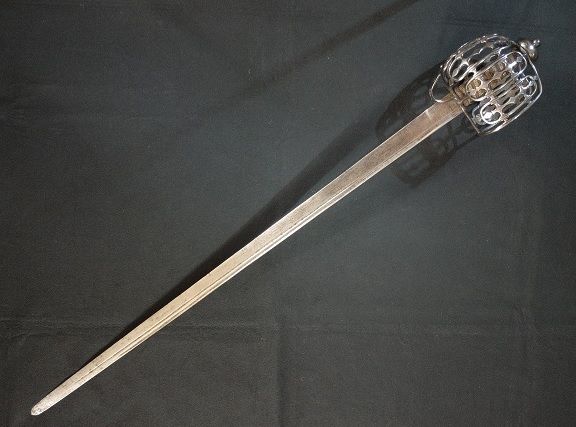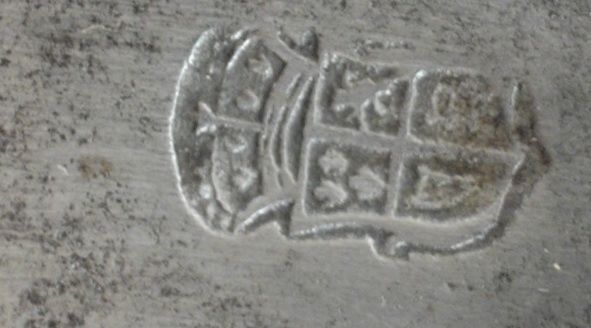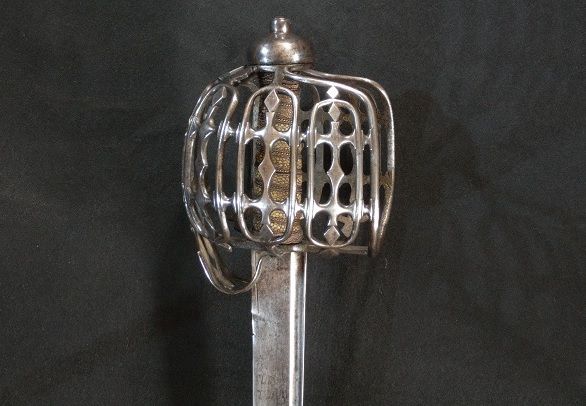Scottish Cavalry Backsword Mid 1700s - Pinch of Snuff Form
Oct 12, 2013 10:30:07 GMT
Post by Jack Loomes on Oct 12, 2013 10:30:07 GMT





The attractive and elaborate construction of the basket of this sword identifies it as a member of a rare and distinct group of mid 18th century Scottish swords. The complex style of hilt is unique and identical to two hilts depicted in contemporary portraits. The first is a painting called "The Pinch of Snuff" by William Delacour, after which the sword type gained its name, and shows an officer in a Highland Regiment probably on service in the Americas, with the sword tucked under his arm whilst he takes a pinch of snuff. The painting is illustrated in "History of Highland Dress", John Telfer Dunbar, Oliver & Boyd 1962, Plate 47.
The second shows Colonel William Gordon of Fyvie, in the uniform of the Queens Own Royal Regiment of Highlanders, painted in Rome by Pompeo Batoni in 1766, illustrated in "The Clans of Scotland", Micheil MacDonald, Brian Trodd Publishing, 1991, Page 108.
Some swords in the group possess a wristguard and others do not. Some have detachable frontal loops and on others the loops are fixed. Some are of "horseman" form with an oval aperture forged into the hilt whilst others lacking this feature were presumably for officers in infantry regiments. The example described here is of horsmans' form, without wristguard and with frontal loops manufactured from a separate plate pierced with a diamond shape to the front and secured to the hilt by screws. It is most like the sword in the Gordon portrait which lacks a wristguard and seems to have detachable frontal loops.
The delicate design of the hilt described here appears to be strengthened by case-hardening. The bun-shaped pommel with integral pommel button sits comfortably in a ring forged around the top of the basket. The wooden grip is covered with shagreen and bound with twisted wire and Turks heads top and bottom made of bronze. The backsword blade has a pronounced fuller with a blunt front edge extending 1.5 inches (4 cm) from the hilt. A pronounced fuller extends from the hilt along the blade just underneath the spine for 26 inches (66 cm) to terminate 6.5 inches from the tip after which the blade becomes double edged to the tip. A second fuller follows a line underneath and parallel to the first commencing 7 inches (18 cm) from the hilt and terminates 4 inches (10 cm) from the tip. The blade is lightly engraved with a scroll design on either side with "andrea ferara" near the hilt. A blade smith's mark is present in the ricasso on both sides which consists of a shield divided into four segments infilled with the arms of the United Kingdom of Great Britain as per the Act of Union of 1707.
The sword is in good tight condition. There are some old slight patches of blackened pitting and staining which give the piece some character.
The blade is just over 32.5 inches (83 cm) long. Overall the sword is 38.75 inches long (just under 99 cm).
Source: www.albanarms.com/

.png?width=1920&height=1080&fit=bounds)